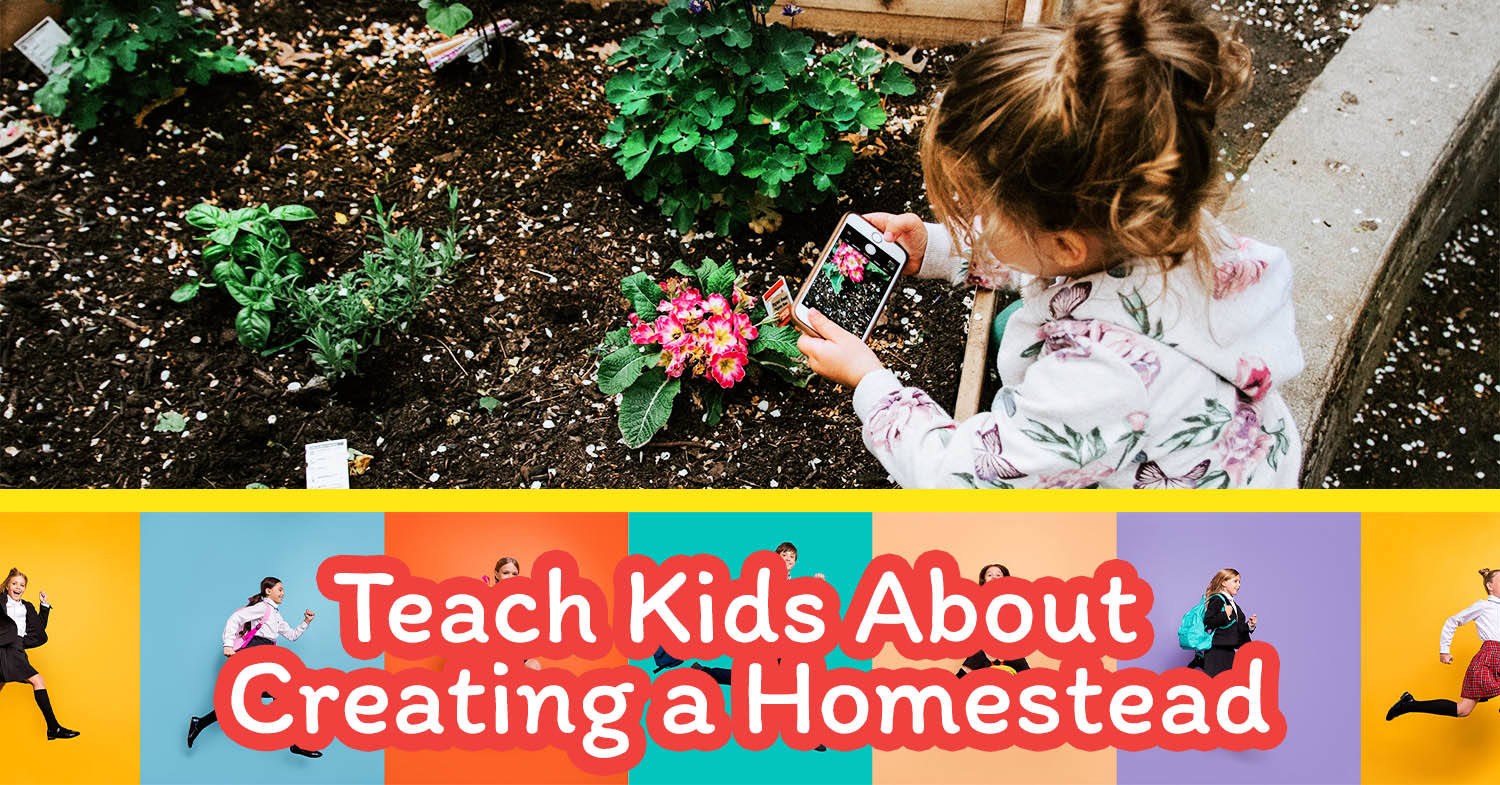Homesteading is a lifestyle that emphasizes self-sufficiency and sustainability. It involves growing your own food, raising animals, and making use of natural resources in a responsible way. Teaching kids about homesteading can be a great way to instill values of hard work, responsibility, and respect for the environment. But the benefits go beyond just the act of learning to homestead.
Studies have shown that when kids are in nature, they learn more and they avoid suffering from “nature deficit disorder.” When this disorder is observed, the consequences the children have experienced was more stress and anxiety, higher rates of obesity and ADHD, and more. Yet when kids are out in nature it is not just good for health; it improves their ability to learn, too. Even small amounts of time in nature can have a significant benefit. Nature improves a kids mental and physical health and can impact learning.
In addition, studies have found that just simply having more tree cover caused students to perform better in class. Nature has been shown to restore kids attention, reduce their stress, develop more self-discipline, promotes social connection and creativity, among other things. It seems pretty clear that there are many good reasons to ensure our kids are spending more time outside with nature. Here are some tips for teaching kids about homesteading.
Get Them Involved in the Garden
Gardening is a great way to teach kids about homesteading. Children can learn about the process of growing food, from planting seeds to harvesting fruits and vegetables. They can also learn about soil, water, and weather and how these elements impact plant growth. Seeing their plants, that they nurture, produce food can also help increase confidence. Starting a garden can be as easy as a few seeds in a cup on a window and later a pot on the step with enough sun. This sort of small step can kick start the excitement for gardening and later homesteading. You can check out our Kids Camps List to find opportunities for fun outdoor learning.
Raise Chickens
Raising chickens is a great way to teach kids about the cycle of life and the importance of taking care of animals. Children can learn how to feed and water chickens, collect eggs, and provide a safe and comfortable environment for the chickens. Chickens can take up very little space and it is another homestead activity that can be started very small and your family learns about the process.
Make use of Natural Resources
Homesteading is all about making use of natural resources in a responsible way. Teach kids about how to use things like solar power, wind power, and rainwater harvesting to reduce their dependence on fossil fuels. This can be a very enriching activity if you have the opportunity to go explore different natural resource strategies. The opportunity to see different, clean new energy can be very inspiring.
Cook and Preserve Food
Cooking and preserving food is an essential part of homesteading. Teach kids how to cook simple, healthy meals using fresh, homegrown ingredients. Show them how to can, dry, and freeze food to make it last longer. Find some simple, fresh, and healthy recipes that you can make together. Then decide how you can preserve the ingredient for the meal and after the meal to best use leftovers. Check out some Hands on Experiences we have included in our Learning by Doing article.
Learn About Composting
Composting is a great way to teach kids about the importance of recycling and reducing waste. Show them how to compost food scraps and yard waste to create nutrient-rich soil for the garden. As kids start to explore all of the items that can be composted into soil and used to grow food, they will be surprised at the benefits of this process over throwing waste in the kitchen trashcan.
Build Things
Building things is a great way to teach kids about self-sufficiency and resourcefulness. Children can learn how to use tools and materials to build simple structures like birdhouses, trellises, or even a small greenhouse. The first steps could be to find a simple kit at a home improvement store. Kits will have all you need and a design to make it really easy to get started.
Make Homemade Soap and Cleaning Products
Teaching kids about how to make homemade soap and cleaning products is a great way to teach them about the importance of using natural and non-toxic products. It also helps them understand the concept of using what we have and reduce waste. And the gratification from seeing a product they created being used will likely increase their confidence and have them more area of the products we use. One Epic Kid Jax Logan O’Conner Makes Soap for People Experiencing Homelessness.
Go on Nature Walks
Nature walks are a great way to teach kids about the natural world and how to live in harmony with it. Children can learn about different plants, animals, and insects, and how they all play a role in the ecosystem. Additionally, the fresh air and sun will not only help kids stay healthier but also have a clearer, more peaceful mind. Or check out more Family Fitness Ideas to find even more ways to get outside and engage your family in some of the benefits of outdoor activities.
Learn About Self-Sufficiency
Homesteading is all about self-sufficiency. Teach kids about how to be self-sufficient by growing their own food, raising animals, and making use of natural resources. Show them how to be resourceful and how to make things from scratch. This process will cause them to think about where all of their resources come from, if not grown, built, or developed by them.
Set a Good Example
The best way to teach kids about homesteading is to set a good example. Practice what you preach and show them how to live sustainably and responsibly.
Keep in mind that homesteading is a lifestyle, not just a set of tasks or skills. It’s about living in harmony with the earth and being responsible for our own well-being. Teaching kids about homesteading can help them develop important values and skills that will serve them well throughout their lives. It will also help them consider where life begins, how it is nurtured, and what it does to feed us then start the process again.
It’s also important to remember that children learn best through hands-on activities. So, instead of just talking about homesteading, let them experience it firsthand. Lay out a plan of how your family can start to create a small homestead. Give them tasks to do and let them take ownership of the process. Also, it’s important to keep in mind that the learning process should be fun and interactive. You can make it a game, a contest or an adventure. This is a process your whole family will enjoy!






